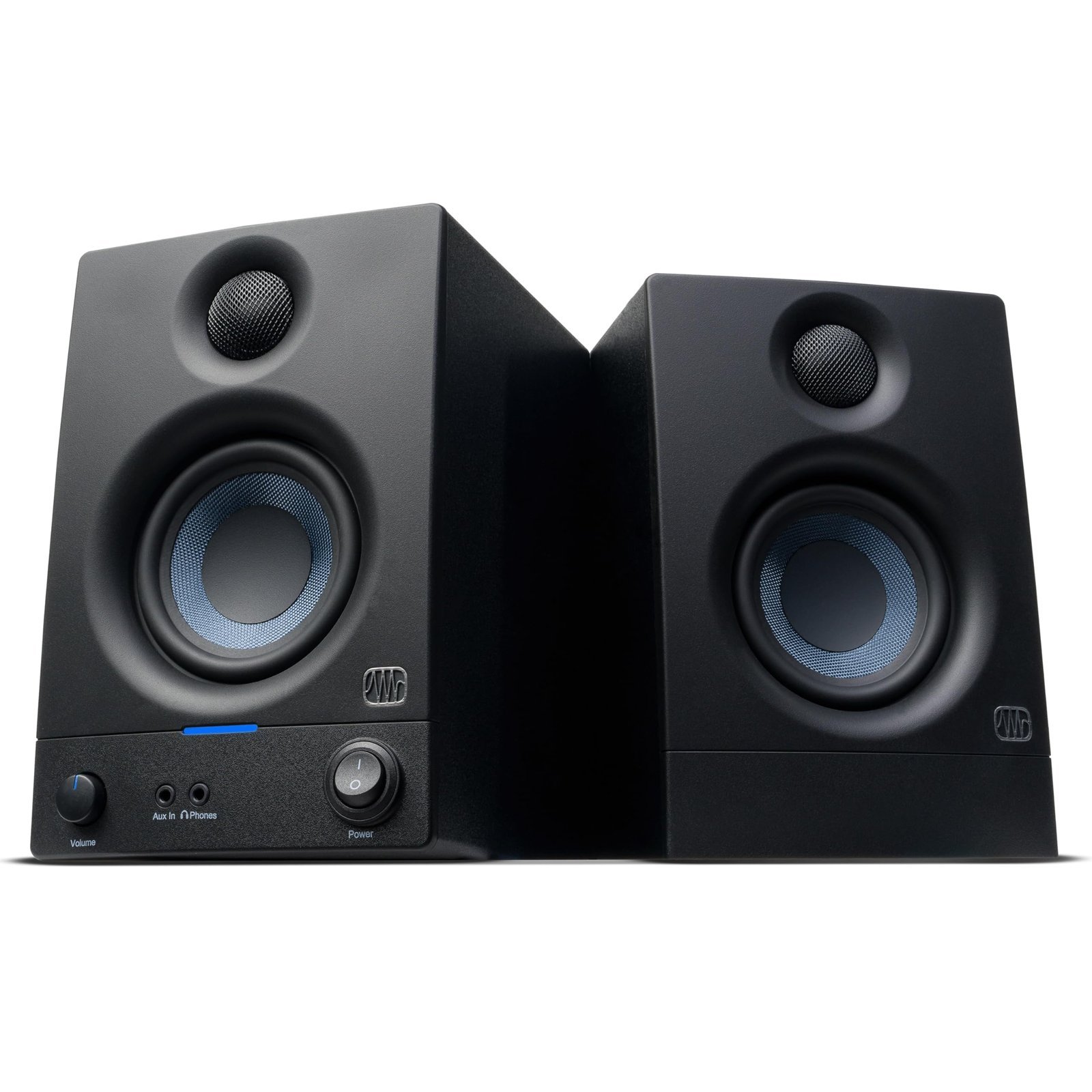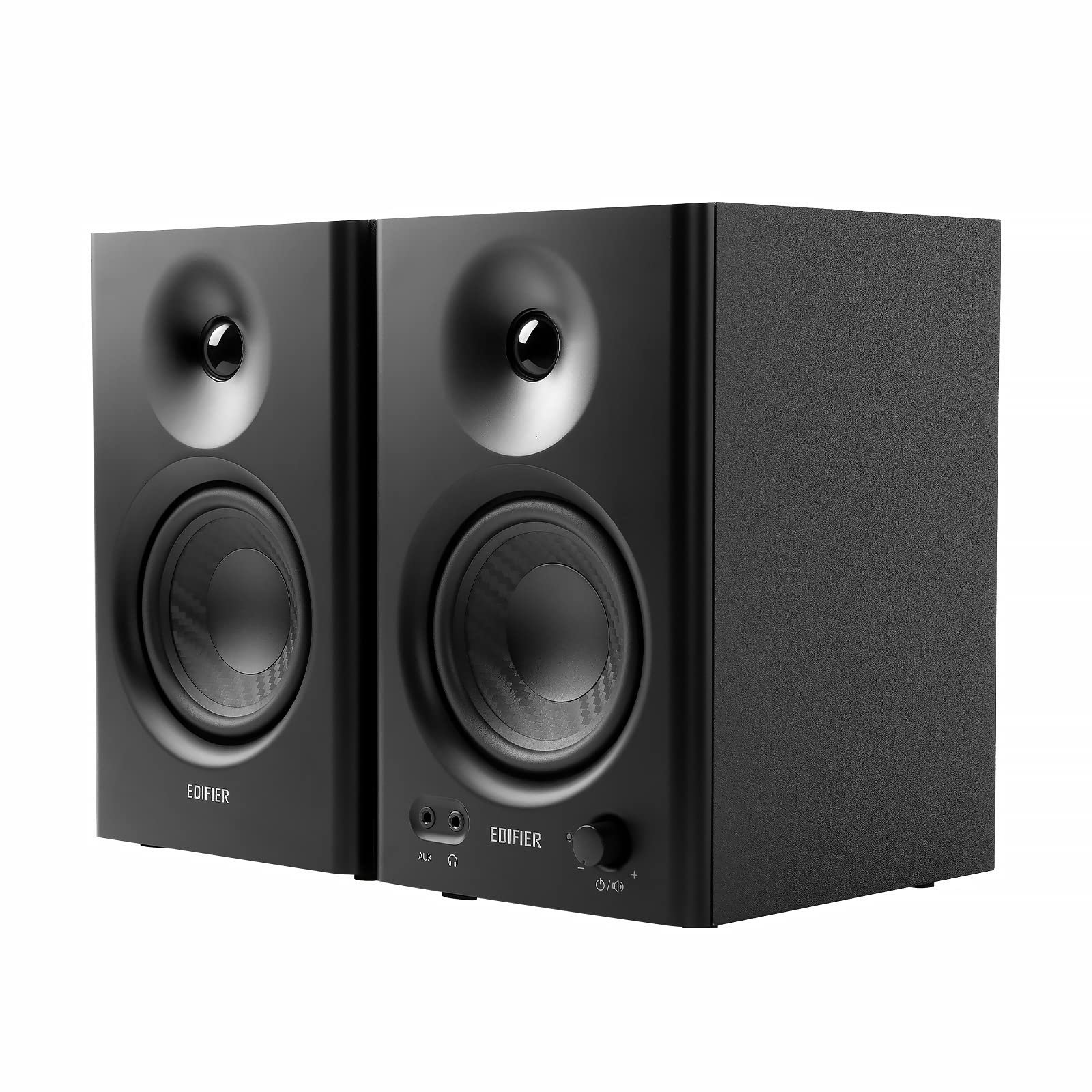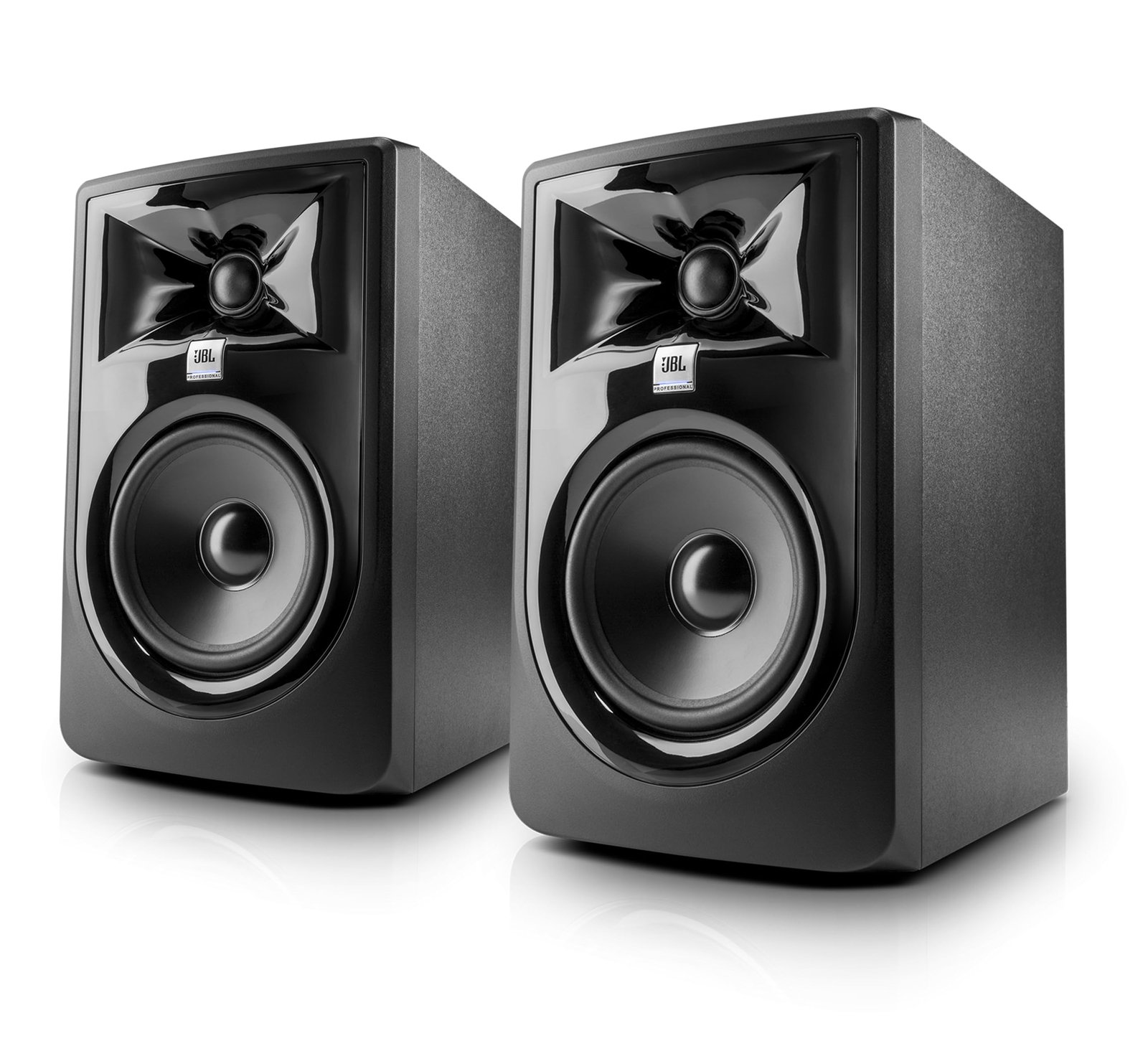When you’re setting up a recording space, choosing the right equipment is crucial, and that includes selecting the perfect studio monitors.
Near-field studio monitors are specialized speakers designed to give you the most accurate audio reproduction possible.
Professionals use them to critically assess recordings, ensuring everything sounds exactly like it should.
Near-field monitors are typically placed close to the listener, which helps minimize the effects of room acoustics and provides a direct sound that’s clear and precise.
One key aspect to consider when purchasing near-field studio monitors is the size of the speakers.
This can affect the frequency range and the amount of bass that the monitors can reproduce.
Additionally, the material and build quality play a significant role in the sound performance and durability.
Active monitors, which have built-in amplifiers, are often convenient, while passive monitors require an external amp but can be more customizable.
It’s essential to think about your room size, monitor placement, and your specific audio needs when making a choice.
Balancing these considerations will help you choose monitors that enhance your audio experience.
Understanding these elements can make it easier to sift through the options and find the best choice for your setup.
Top Near-Field Studio Monitors
You’re on the hunt for the perfect sound, and a great set of near-field studio monitors can make all the difference in your audio setup.
These monitors are designed to give you accurate sound reproduction, letting you catch those subtle details in your mixes.
Let’s dive into the top picks that deliver performance and clarity right at your fingertips.
PreSonus Eris 3.5 Studio Monitors
These studio monitors are a solid choice if you’re looking for compact speakers that deliver clear sound and versatility for home use or content creation.
- Compact design fits easily on any desk
- Clear, distortion-free audio with 50 watts of power
- Flexible tuning options for customizable sound
- Limited bass without additional subwoofer
- Require external power source; not battery-operated
- Higher settings might not suit larger spaces
PreSonus Eris 3.5 Studio Monitors stand out with their compact size and powerful sound, ideal for gamers and budding producers.
These speakers are designed to offer clear, balanced audio with the added benefit of customizable high- and low-frequency controls.
Ideal for smaller setups, they fit perfectly in confined spaces or desktops.
Despite their size, they pack 50 watts of output, ensuring loud and clear sound.
This makes them a versatile choice for both music production and general multimedia activities.
If you need to switch to a more private listening experience, the handy headphone amplifier is right at your fingertips.
While these speakers might fall short on the bass side without an additional subwoofer, they deliver impressive audio quality and clarity otherwise.
Known for precision, they can be an excellent addition to your setup if space is a constraint.
Edifier R1280T Studio Monitors
These speakers are a fantastic choice if you’re seeking great quality sound without breaking the bank.
- Clear and natural sound.
- User-friendly remote control.
- Timeless wooden finish complements your decor.
- Lacks Bluetooth connectivity.
- Bass may not be powerful enough for some users.
- Side panel controls may not be convenient for everyone.
The Edifier R1280T Studio Monitors are ideal for both home entertainment and creative work.
Their classic wooden build not only looks stylish but also adds durability to the design.
You can connect them to various devices with the dual AUX input.
These monitors offer crisp sound quality, making them a good fit for a laid-back music session at home.
The remote control provides ease of use, allowing you to adjust volume, bass, and treble without leaving your seat.
While they don’t have Bluetooth, their versatility and acoustic performance make them a solid option.
If you’re after straightforward controls and cozy aesthetics, these might be just what you need.
Edifier MR4 Studio Monitors
These studio monitors offer a great balance of performance and versatility at a competitive price point, making them an appealing choice for music creators and casual listeners alike.
- Professional sound quality with excellent clarity
- Adjustable frequency controls for tailored audio preferences
- Dual-mode design for versatile usage
- Limited bass depth may not satisfy all users
- Slightly bulky for small desktop setups
- Lack of Bluetooth connectivity
Edifier’s MR4 Studio Monitors deliver professional-grade sound quality, perfect for both budding and experienced music creators.
The 1-inch silk dome tweeters and 4-inch woofers provide a smooth, clear audio experience.
With a flexible design, these speakers can adapt to your needs, whether you’re producing music or just enjoying a playlist.
The dual-mode design lets you switch between studio and music mode easily, offering a unique listening experience based on your activities.
You can fine-tune your audio with the convenient high- and low-frequency controls as well, giving you full command over your sound environment.
Additionally, the front-panel knobs make it easy to adjust volume and switch modes.
If you’re concerned about space, keep in mind that these monitors are a bit larger than typical desktop speakers, which might be something to consider for your setup.
While they lack Bluetooth connectivity, the variety of wired inputs ensures they’ll fit right into most home studios or computer setups.
M-Audio BX3 Studio Monitors
If you’re in the market for a compact yet powerful audio upgrade, these monitors might just hit the right note for you.
- Impressive sound quality suitable for multiple media uses
- Compact design complements any desktop setup
- Variety of connection options for versatile use
- Limited to desk placement due to small size
- May lack some bass depth for professional studio needs
- Volume controls are located at the back, which could be inconvenient
The M-Audio BX3 Studio Monitors inject vibrant audio into any media experience.
Whether you’re streaming a movie or diving into your favorite game, the sound is rich and immersive.
The attractive design also enhances the look of your space without taking up much room.
While these monitors are great for everyday use and multimedia playback, they might not hit the mark for those seeking deep, studio-worthy bass.
The compact size excels in limited spaces, yet it limits the low-end punch that some might crave.
Connecting your devices is a breeze thanks to multiple input options.
This flexibility makes the BX3 ideal for non-professional setups looking for a high-quality sound boost.
Overall, it’s an excellent choice for those wanting to switch from basic computer audio to a more engaging auditory experience.
JBL 305P MkII Studio Monitors
Reliable choice for any music studio looking for precision and power.
- Delivers crisp, detailed audio with outstanding precision.
- Wide sweet spot for versatile listening positions.
- Robust build designed for long-term use.
- Bass response might be a bit too pronounced for some.
- Requires stand or optimal placement for best performance.
- Slightly more expensive than entry-level monitors.
These JBL 305P MkII studio monitors are a solid pick if you’re looking for a combination of performance and reliability.
The sound clarity is impressive, making them ideal for mixing, mastering, or just enjoying high-quality audio output.
What sets these monitors apart is their ability to maintain a crisp sound profile across different frequencies.
You’ll appreciate the robust construction, ensuring they last through countless sessions in your studio.
Their wide sweet spot also offers flexibility if you need to shift your listening position while working.
On the flip side, these monitors might produce a stronger bass response, which may not be to everyone’s liking.
It’s important to consider optimal placement to get the best acoustics out of them.
While they are a bit pricier than some entry-level options, the quality and durability justify the investment.
Buying Guide
Choosing the right near-field studio monitors can be crucial for your audio experience.
When picking a pair, consider room size and acoustics.
Key Features to Consider
- Frequency Response: Look for a flat frequency response for accurate sound reproduction.
- Size and Placement: Smaller rooms often benefit from smaller monitors.
- Power: Understand your needs in terms of wattage; more power usually means a more dynamic range.
Room Considerations
- Room Treatment: Ensure the room is well-treated to minimize reflections.
- Sweet Spot: Position monitors to create an optimal listening position.
Technical Specifications
| Feature | Description |
|---|---|
| Amplification | Active monitors have built-in amps; passive ones don’t. |
| Inputs | Check for XLR, TRS, or RCA based on your setup. |
Budget
Determine your budget early.
Investing a bit more upfront can provide better sound quality and longevity.
Listening Test
Always try to test monitors with reference tracks you are familiar with.
This can help you gauge their audio quality and suitability for your needs.
Frequently Asked Questions
You might be curious about the best setup for your studio monitors or wonder what sets near-field monitors apart from other types.
Below, you’ll find answers to common questions about near-field studio monitors.
What’s the ideal placement for near field studio monitors?
Place them roughly 3 to 5 feet away from where you sit, forming an equilateral triangle with your listening position.
Make sure the tweeters are at ear level.
Avoid placing them directly against walls to prevent sound reflections from interfering with the audio accuracy.
How do you compare near field and far field studio monitors?
Near-field monitors are designed for close-range listening, making them ideal for smaller studio spaces.
Far-field monitors, on the other hand, are suited for larger spaces and offer a more dispersed sound, capable of filling the room.
Can you use near field studio monitors for gaming?
Yes, these monitors offer accurate sound reproduction, which can enhance your gaming experience.
You’ll appreciate the detailed audio, though you may need a subwoofer for low-end support, especially during action-packed scenes.
What makes a pair of studio monitors ‘near field’?
Their design focuses on short-range listening, emphasizing clarity and precision.
The sound is directed towards the listener, reducing the influence of the room’s acoustics.
This helps you hear recordings as they truly are.
How do near field monitors differ from regular speakers?
Near-field monitors are for monitoring sound with precision, unlike regular speakers designed for general listening pleasure.
They offer a flat frequency response to ensure no particular frequency is exaggerated, providing an honest audio representation.
What are some top-recommended near field studio monitors?
Some popular choices include the Yamaha HS5, KRK Rokit 5 G4, and the JBL 305P MkII.
Audiophiles and professionals alike praise these models for their audio accuracy and build quality.






